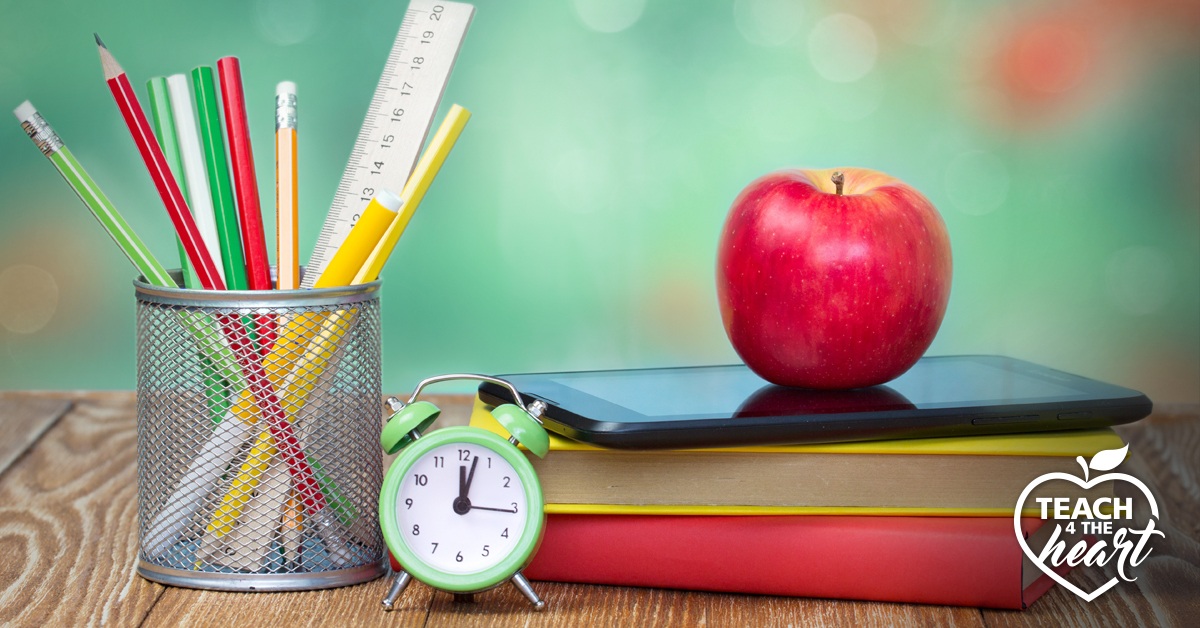
Update: With the COVID-19 pandemic, many schools are looking at a hybrid learning model with some learning happening in-person and some happening at home. Other schools are offering their students a choice between in-person learning or full-time distance learning, yet teachers are expected to somehow provide the same instruction to both kinds of students.
Flipping your classroom can be a great solution to this problem. Teachers create instructional videos for all students watch at home. Then in-person students do their practice work in class with you, receiving face-to-face help, while the distance learning students do their practice work at home, receiving help from their parents or from you virtually during office hours. This model ensures that both sets of students receive exactly the same instruction.
Oh, and, of course, it continues to work tremendously for regular in-person instruction, too!
Here's the details:
We were only 30 seconds into class and I was already panicking.
Where is their homework? Did none of them do it?
Their empty desks taunted me, predicting the misery that was to follow.
Nine.
Out of 23 students, only 9 had their homework done.
Not good.
just slightly panicking
I pushed down the panic and forced a tentative smile. "Okay, who wants to put a problem on the board?" (Since none of the students I had assigned this task to had it done....)
Crickets.
So much for volunteers.
"Greg, Sarah, Olivia, Dillan, Eva, and Cara. You're up!"
As they sulked to the board and grabbed a marker, I took a deep breath, willing the panic away. "Everything will be fine. We'll review the problems, answer questions, and be back on track."
But as the board slowly filled with algebra, my resolve gave way to frustration and I shook my head in disbelieving resignation.
None of these problems were worked correctly. Not one.
This just isn't working, I thought. First, the majority don't even attempt the homework. And then those that do clearly needed help and I wasn't there.
There has to be a better way.
Fortunately, there is. It's called flipping your classroom, and if you're ready to better support your students (and escape the homework rat race), you're definitely going to want to try this out.
What does it mean to flip your classroom?
Traditionally, you teach new concepts during class and have students practice them at home for homework. But with technology, you can flip that around. Your students watch a video at home that explains the new concept to them. Then they practice during class the next day.
Flipping your class can also be hugely helpful with hybrid or distance learning, as it allows you to use your face-to-face time (whether in-person or online) to practice together or apply what you're learning, students having all watched the same video lesson for homework.
GRAB THE CHECKLIST
Before we get into the nitty-gritty, grab your handy checklist that will take the guesswork out of flipping your class.
Get your free Flip Your Class Checklist here.
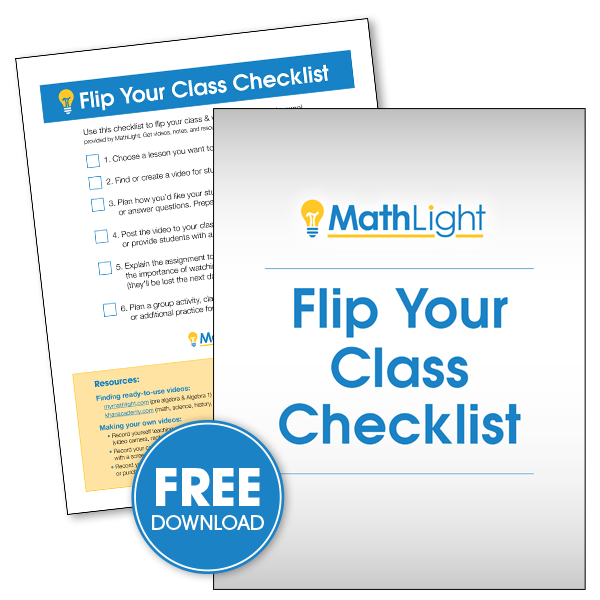
WHAT VIDEOS DO MY STUDENTS WATCH WHEN I FLIP MY CLASS?
You can either create your own teaching videos or use videos that someone else has created.
If you love teaching certain concepts or have a special way of explaining them, you might want to invest the time into creating your own teaching videos. You can record them during your free time (because you have so much free time, right?), but you also might try recording yourself teaching live (to use in other sections of the class or for the following year).
Depending on your topic, you may also be able to find great videos online. Try searching YouTube, Teachers pay Teachers, or educational websites related to your topic.
And if you teach pre-algebra or Algebra 1, you're in luck. MathLight, our sister website, has created free teaching videos covering a variety of pre-algebra and Algebra 1 topics. Get free pre-algebra lesson videos here. Or, get single video lessons with the accompanying notes here.
HOW CAN I MAKE MY OWN VIDEOS?
If you have a smart board and Smart Notebook, they likely include a digital recorder that can record both your voice and whatever is displayed on the smart board.
If you don't have a smartboard, you can simply set up a video camera and record yourself explaining the concept.
Or, if you have a power point, digital notes, or something else on your computer that you want to show your students, you can use a free screen recording software like Screencast-o-Matic to record your computer screen as well as your voice as you explain what's shown on your screen.
HOW DO MY STUDENTS WATCH THE VIDEOS WHEN I FLIP MY CLASS?
If you're making your own videos, you can upload them to YouTube and simply send your students the link. Or, you may be able to upload them directly to your class website.
If you're using videos you found online, you may be able to send your students the direct link. Or, you can check with the provider to find the best way for your students to watch them.
HOW DO I KNOW IF THEY ACTUALLY WATCHED THE VIDEOS?
You could simply go on an honor system and ask your students if they watched them, but we all know how unreliable that is.
Instead, ask your students to take notes about what they watched and show them to you the next day.
**If you use our pre-algebra or Algebra 1 videos, you can purchase the accompanying student notes that your students can easily complete as they watch the videos. See our selection of videos with student notes.**
WHAT IF SOME OF MY STUDENTS DON'T WATCH THE ASSIGNED VIDEO?
Use whatever procedure or policy you have for when students don't complete homework.
Or, require those students to watch the video during class instead of joining the rest of the group. Then, assign whatever they missed during class (or an alternate assignment) for homework that night.
HOW LONG SHOULD THE VIDEOS BE?
Simple answer - as long as they need to be to teach the concept. Keep them as short and concise as possible, but take the time needed to fully explain the lesson.
The optimal length will depend on the age of your students. But think maybe 10-15 minutes for elementary students or 15-30 minutes for middle school / high school.
WHAT DO I DO DURING CLASS WHEN I FLIP MY CLASSROOM?
You may want to start by answering any questions the students have and/or by working an example together.
Then, assign some type of practice for students to build their skills - and for you to walk around and answer personalized questions.
The great thing is that you can get creative in the different forms this takes. You could simply have students work individually, but you can also have them work in groups or complete more creative activities.
HOW OFTEN SHOULD I FLIP MY CLASS?
How often you flip your class is totally up to you! You could flip it every day or only occasionally.
For example, if you just want to try it out, consider flipping your class the day after a test. Students watch the video the night after they take the test, then you practice together or do an activity the next day.
IS IT REALLY WORTH ALL THE EXTRA EFFORT TO FLIP MY CLASS?
Absolutely! You'll be amazed how many benefits you'll discover.
First of all, the kids love it. They know there's a set amount of time for their homework, so they know it's only going to take them 20-30 minutes, no matter what. They can also pause the video or rewatch sections if they don't understand. (And parents are thrilled they don't have to struggle to help with homework.)
When you flip your classroom you also have tons more time to interact with your students one-on-one or in groups while they work on assignments. This means you can give them better help, correct misconceptions, and even more easily differentiate based on their needs.
When a kid is absent, there's no problem. They can just watch the video & make up the work easily.
And that's just the tip of the iceberg. Check out this article for 10 reasons you should try flipping your class.
WHAT IF SOME STUDENTS DON'T HAVE INTERNET ACCESS AT HOME?
Have solutions ready for those who cannot access the internet at home. Here's some ideas:
- Students may be able to watch the videos in the computer lab during study hall or after school. Check with your admin to see if this is possible and what procedures you need to create.
- Most libraries offer free internet access. Consider if this is something you could suggest or require students to use.
- If you have the actual video file, students could bring flash drives and you can load the videos directly onto them. Quick, easy, and inexpensive, as you can typically get a flash drive like this one for under $10.
HOW CAN I GET STARTED FLIPPING MY CLASS?
Look ahead in your plans for a topic that you could easily teach via video - or that you know you could find a great video for online. Prepare the video and plan what practice, group, or hands-on activity will best help them comprehend the topic. Prepare the activity for the next day.
When the time comes, assign it to the students to watch for homework. Hold them accountable by requiring them to take notes, giving a brief comprehension quiz the next day, or asking them to summarize what they learned.
Then use your class time to help students as they work, practice, and learn together.
You'll love interacting more with the students - and also the lack of panic attacks.
We're working with Rick Scarfi of MathLight to bring you amazing math videos & curriculum that will allow you to easily flip your classroom without all the extra work.
And the best news? All our pre-algebra videos are currently available for FREE!
Or, click here to purchase single video lessons with accompanying notes.
**Now including both pre-algebra AND Algebra 1 videos**
spread the word!
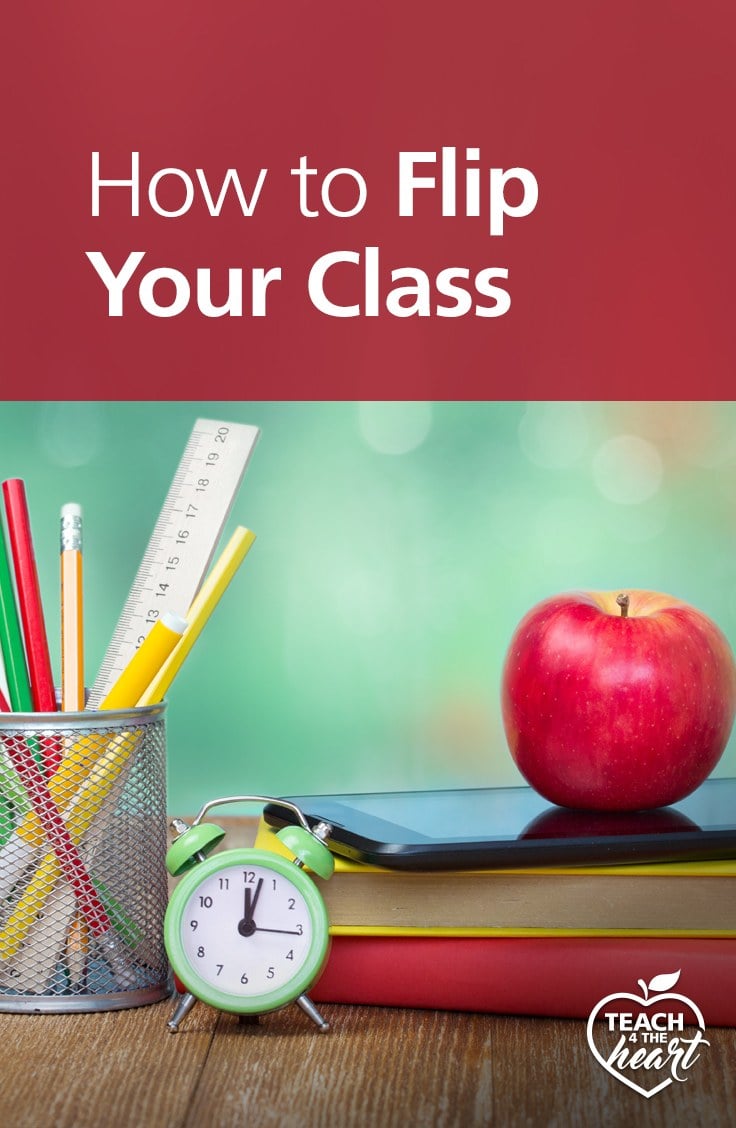


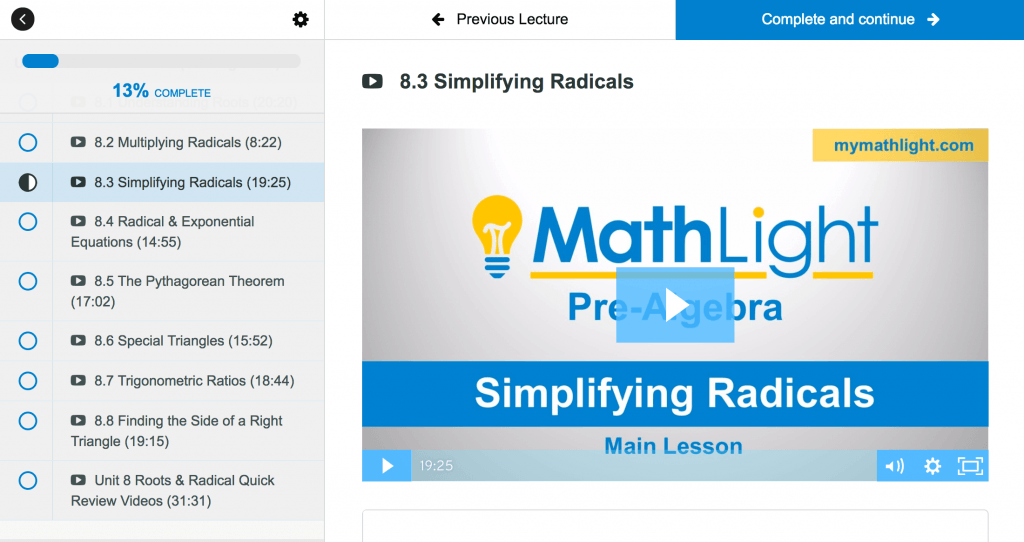
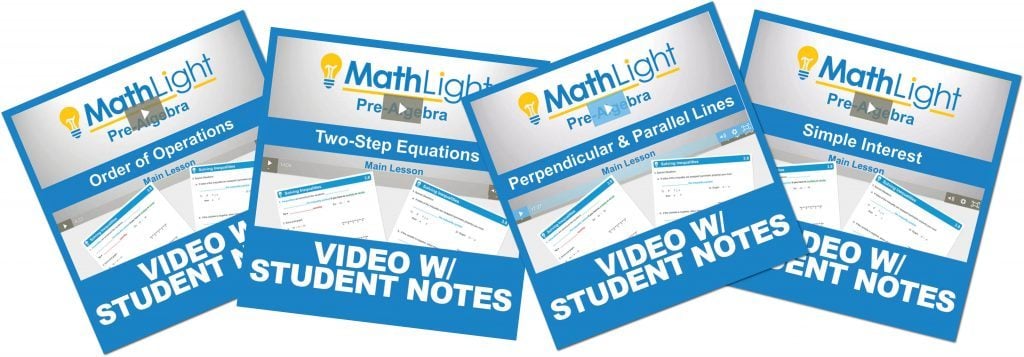
Thank you. Great information!
Thank you for sharing. Very useful
Love this idea….going to see if I can try it soon
I really like your advice ,it has rich information about teaching.
you impacted me more of teaching techniques. God will keep keeping you up.
thanks.
God bless.
Edpuzzle is a great way to have kids watch videos. You can prevent them from skipping ahead, see whether they watched, and even embed questions into the videos. You can post 10 videos for free; for more than that you need a paid account.
Do you have the class turn in work by the end of class? What if a student is slower and cannot complete the work in class?
You could send it home as additional homework if it’s not completed. Or use whatever protocol you use for make up work in your classroom.
Sounds exciting… However would you have Grade 5 material (with Math light)? the pre-algebra and algebra are more for grade 6 and upper right? … Thank you!